Mindful movement is one component of a typical mindfulness course. It generally involves making gentle movements, often based on Yoga, qi gong or tai chi. The instruction is to notice how the body feels as it moves and the changing sensations that are experienced through movement. The instruction is to do this with curiosity, non-judgement and self-kindness. A key element of mindfulness is awareness of direct experience, in particular physical sensations and how sensations in the body relate to emotions and thought activity. The practice of mindful movement and bodyscan, in particular, enables the development of body awareness.
Firstly, research supports the view that movement practices, such as yoga, qi gong and tai chi are beneficial practices in and of themselves.
Research suggest that yoga practice is beneficial to mental health, including reducing anxiety, depression, stress, age related decline in brain function. It is also beneficial to physical health, including improving diabetes, cardiovascular function and musculoskeletal conditions. It proves useful in supporting people with diagnoses of cancer and through the process of ageing (Okonkwo & van Praag, 2019).
Research suggests that qi gong and tai chi practice provides a number of health benefits, including bone density, chronic pain conditions, cardiopulmonary effects, falls, balance and related risk factors, quality of life, self-efficacy, immune and inflammation related responses, anxiety and depression (Jahnke et al, 2010).
Secondly, research suggests that the combination of mindfulness and movement may bring additional benefits. For example, the mindful yoga element of MBSR has been shown to have the biggest impact on changes in mindfulness, wellbeing and medical symptoms. Also, mindful yoga is correlated with decreases in negative judgement of inner experience, contributing to reduced stress and reduced depressive symptoms. Body based practices, such as yoga and tai chi improve awareness of the moving body, but when this is made explicit through mindful movement, significant possibilities for development of the mind-body system arise (Russell & Tatton-Ramos, 2014).
Some research suggests that mindfulness starts with the body and that from learning to attend mindfully to the body, follows the ability to regulate more abstract mental activity, such as thoughts, memories, images, etc. In addition, embodied learning may create a learning experience that is embedded at a deeper level. There is growing interest in health professions in body psychotherapies and somatic education methods, such as Feldenkrais and Rolfing, which anecdotally report favourable results. Movement and the motor system provide an essential foundation for our emotional and cognitive lives. Movement and mood are intimately linked and it is clear that lack of movement impacts negatively upon us (Russell & Tatton-Ramos, 2014).
There is also the suggestion that mindful movement, as opposed to sitting mindfulness practice, may be particularly beneficial to those who experience chaotic, disorganised or distressing mental experiences, those with compromised attentional capabilities, those who find it hard to sit still and those with a diagnosis of ADHD (Russell & Arcuri, 2015).
When movement is used in mindfulness training the same brain areas are engaged as for mind wandering states, which suggests that mindful movement will help participant to be more present. Working memory load is increased when planning and executing movements, and increased use of working memory is correlated with decreased activity in the default mode brain network associated with mind wandering. In addition, the concrete physical sense of a movement, with a beginning middle and end may well provide a stronger anchor against which to detect mind wandering (Russell & Arcuri, 2015).
So, for those people who find it difficult to be in touch with body sensations and for those people who have particularly active minds and/or who find it difficult to sit still, mindful movement practice may be a good way to access the many benefits of mindfulness practice.
References
Jahnke et al (2010), A Comprehensive Review of Health Benefits of Qigong and Tai Chi.
Okonkwo & van Praag (2019), Yoga Effects on Brain Health: A Systematic Review of the Current Literature.
https://content.iospress.com/articles/brain-plasticity/bpl190084
Russell & Arcuri (2015), A neurophysiological and neuropsychological consideration of mindful movement: clinical and research implications.
https://www.frontiersin.org/articles/10.3389/fnhum.2015.00282/full
Russell & Tatton-Ramos (2014), Body in Mind Training: Mindful Movement for the Clinical Setting.


